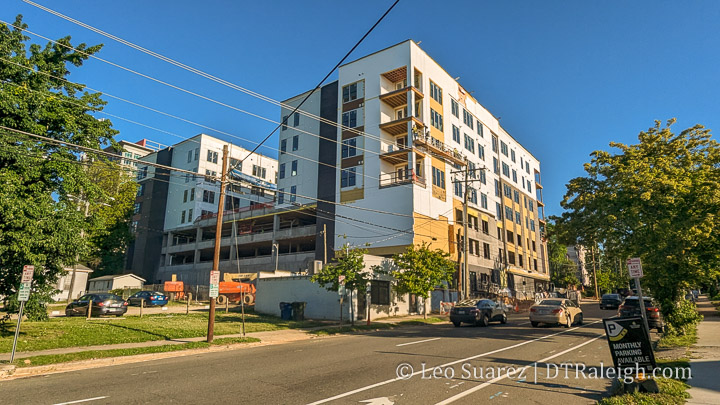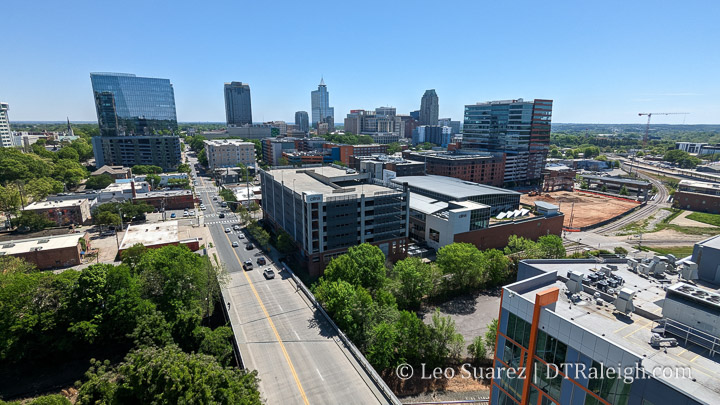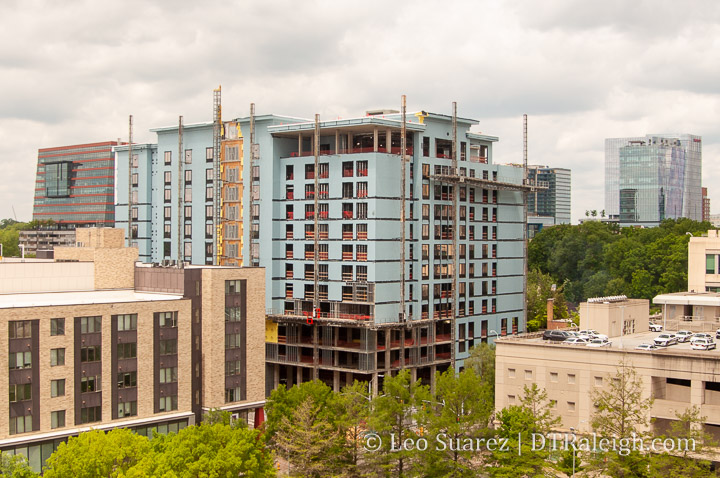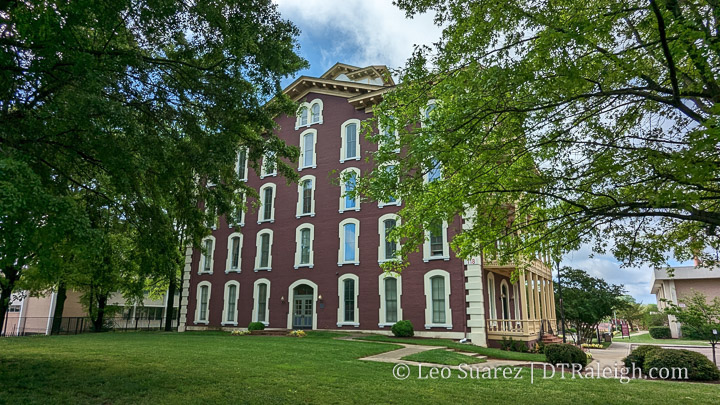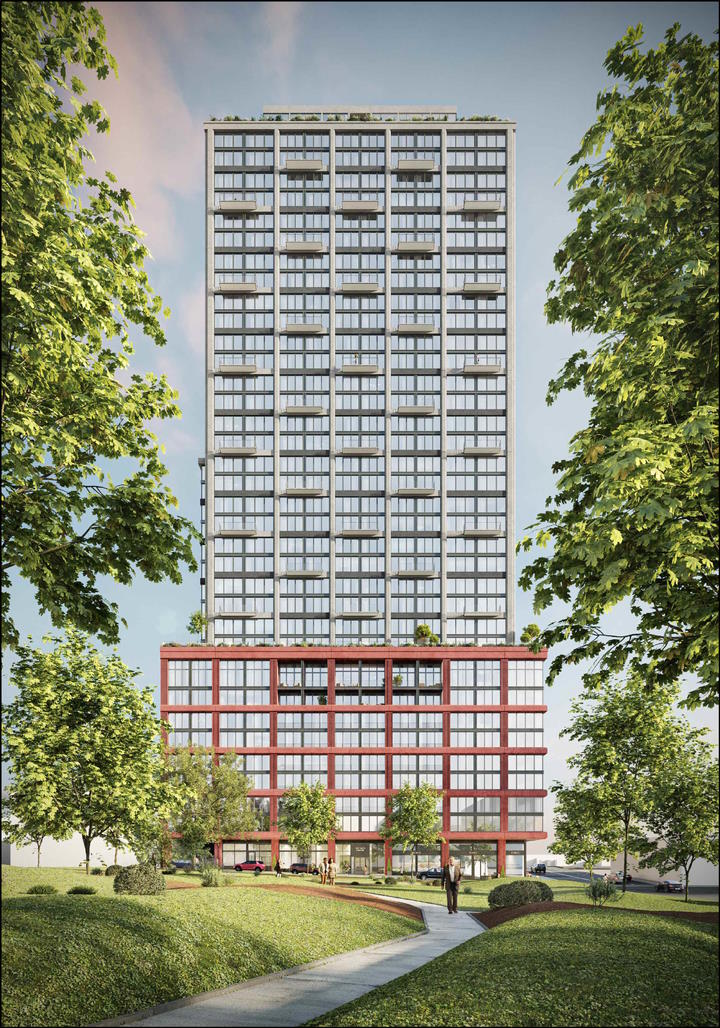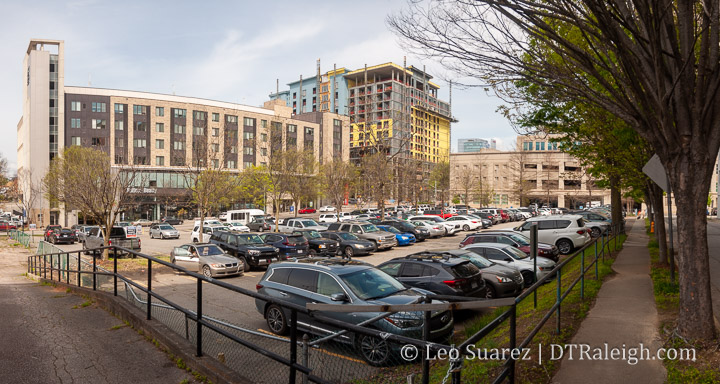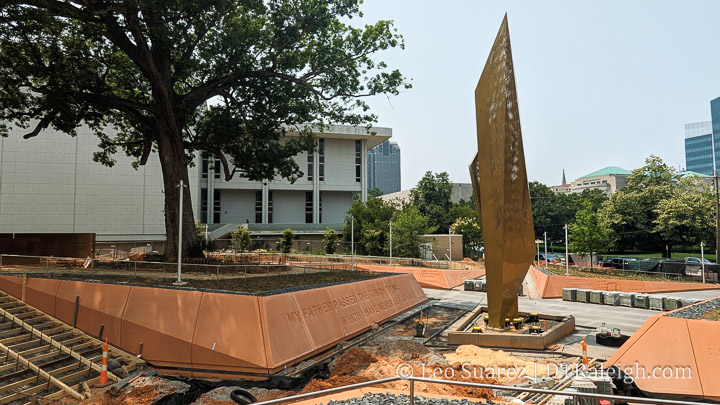
Freedom Park, located at the corner of Lane and Wilmington Streets, looks to be in the final stages. I’m impressed so far with what you can see and have to admit that the renderings didn’t do it justice. This space not only looks good but should be moving to visitors who want to honor the struggle for freedom experienced by African Americans in North Carolina.
I think this post seems appropriate as the 2023 Juneteeth holiday approaches. The park plans to finish this year and I imagine there will be a ceremony to officially open it to the public.


